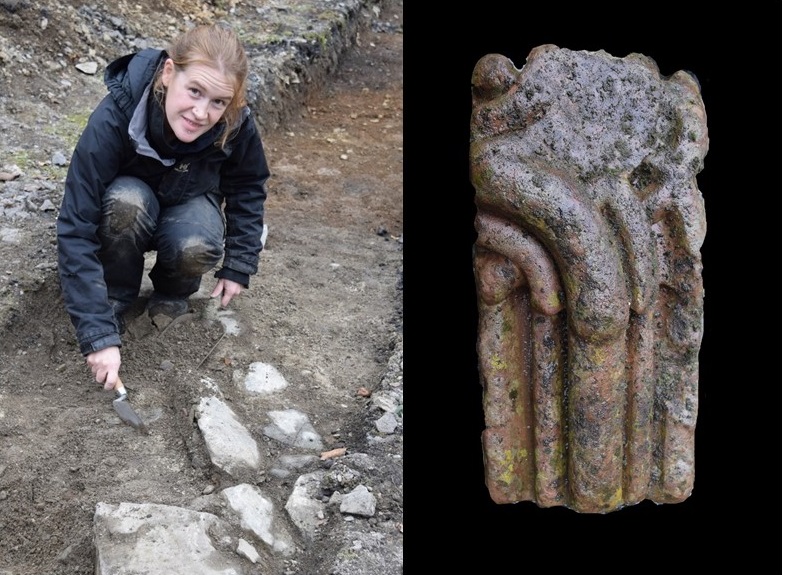
The Isle of Man maintained only three monastic establishments during the later Middle Ages, one being a Nunnery on the edge of what is now the Island’s largest town, Douglas, where Harold Mytum and Rob Philpott have just completed an excavation on its possible site.
The present Nunnery house was constructed on a new location in 1823, and the Centre for Manx Studies excavated some medieval burials when the associated stables were refurbished in 2009 as the Centre’s offices. The Nunnery buildings then remained elusive, but a decade later we have returned to the adjacent walled gardeners’ compound, the site of the 18th-century house, and possibly that of the medieval Nunnery.
The compound is being considered for development, and so we undertook a site evaluation, with local help, to assess the state of preservation and the importance of any archaeological deposits. Although only 10% of the compound’s area was investigated, we found some tantalising signs that it is rich in evidence for the development of an important site from the Middle Ages through to the 19th century.
The archaeology lies immediately below the present surface, consisting of the foundations and a cellar from the Georgian 18th century house, its appearance otherwise known only through Warwick Smith’s 1795 painting. We have now identified that the house was added onto an existing wall, possibly part of the medieval Nunnery, a short section of which stands over 2 metres high. Other medieval evidence associated with the Nunnery was found– some shallow ditches, possibly boundaries or marking a trackway approach to the religious complex – and a small pit with a significant assemblage of copper-alloy working debris.
Particularly surprising was the discovery of an architectural fragment similar to some eroded pieces reused in the 18th century house wall. It shows carved mouldings on two sides, suggesting it was part of a doorway into a later 16th Century fashionable late-Renaissance residence.
Rob said:
No house of this period and style has previously been identified on the Isle of Man; all such properties have been either rebuilt or demolished. This find shows that the Manx upper classes aspired to keep up with the latest British architectural fashions. This belies some of the historical claims that all the Isle of Man was impoverished in the period before smuggling brought considerable wealth to the Island in the 18th century. Our work at The Nunnery complements our discoveries of post-Dissolution changes at Norton Priory as part of our student field school.
Harold said:
This evaluation excavation has revealed a more complex site history than we had expected, lying just beneath the surface. We can see the way in which secular landowners took over the monastic site and turned it into a fashionable residence that remained at the upper end of the Manx social scale. If we could carry out further excavations, we would learn a lot more about the medieval Nunnery and one of the most important country house sites on the Island.
Rob commented:
This shows how even small developer-funded evaluation excavations can reveal important evidence. We wait to see if building plans proceed and if more archaeology can take place.
Discover more
Learn more about studying in the department of Archaeology, Classics and Egyptology.